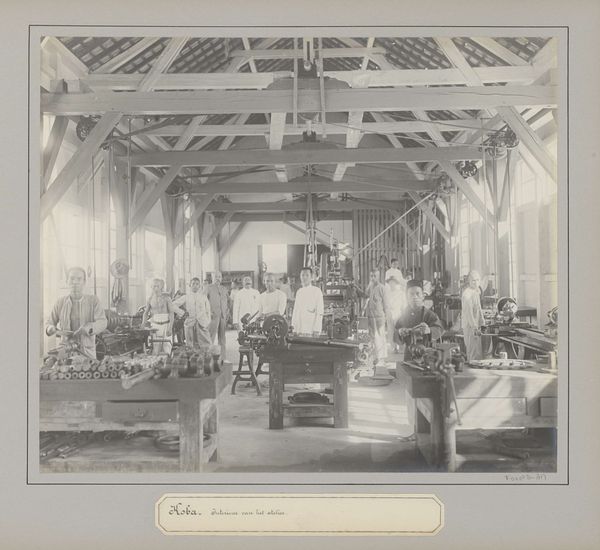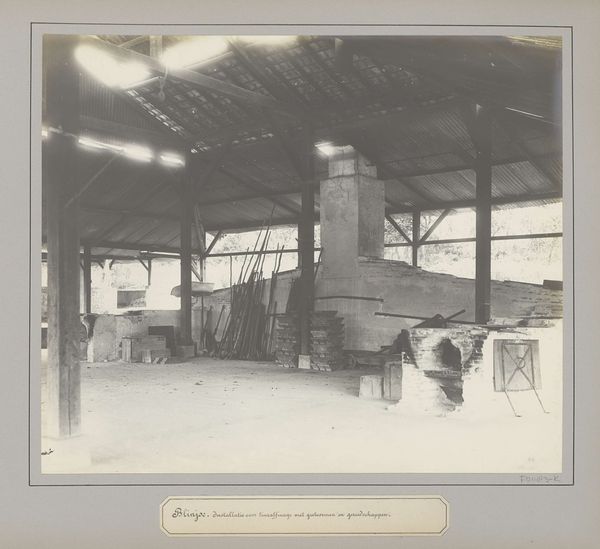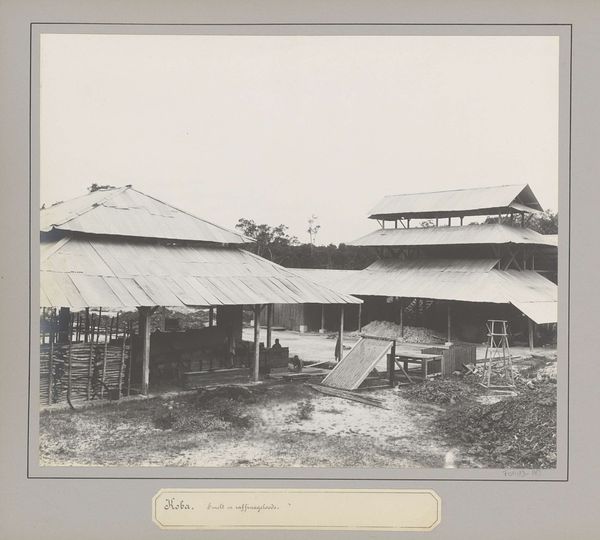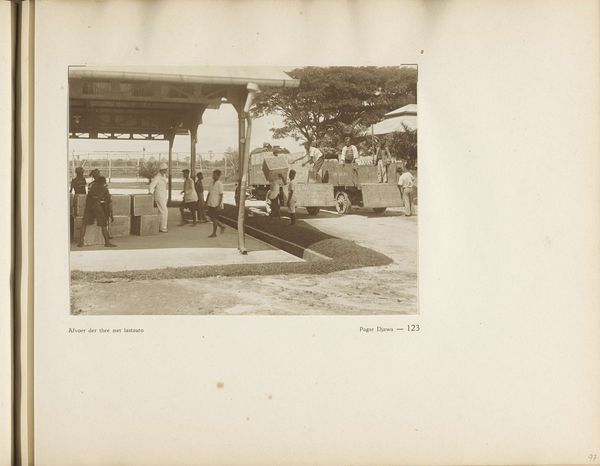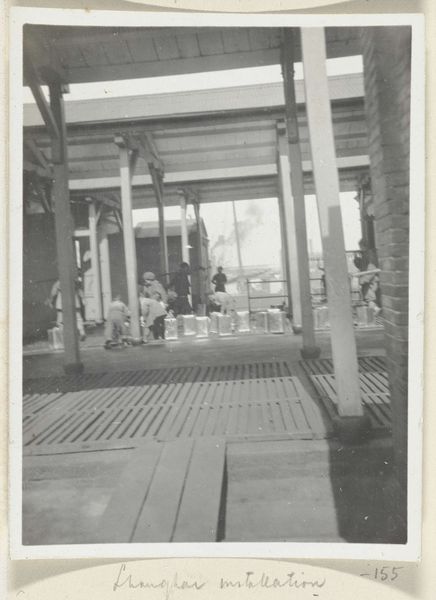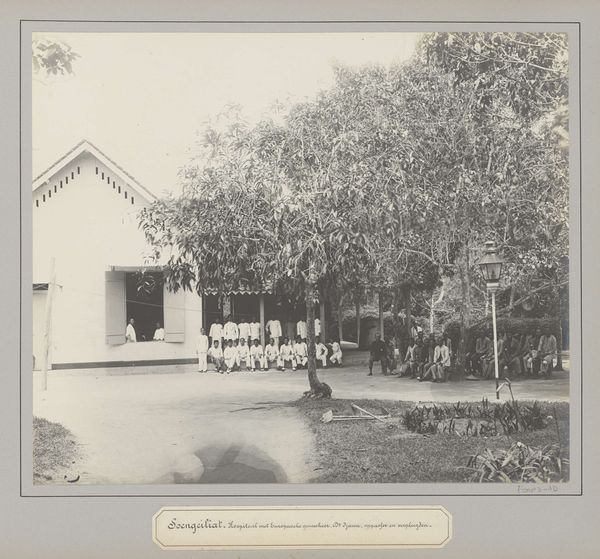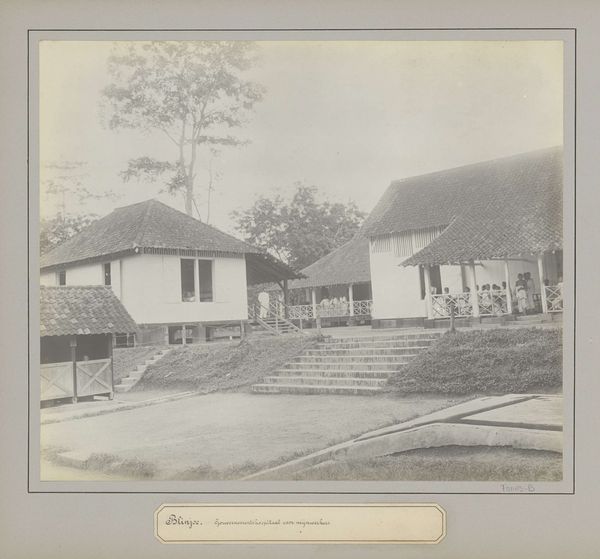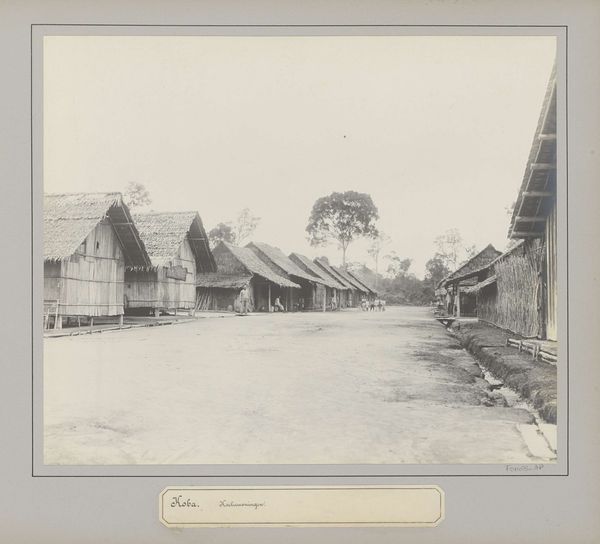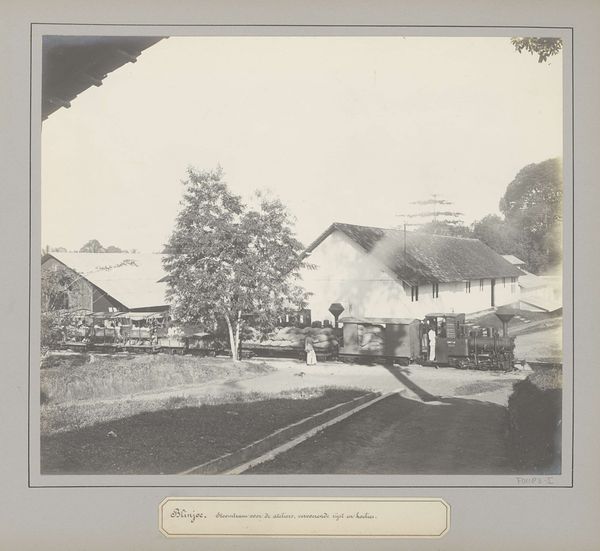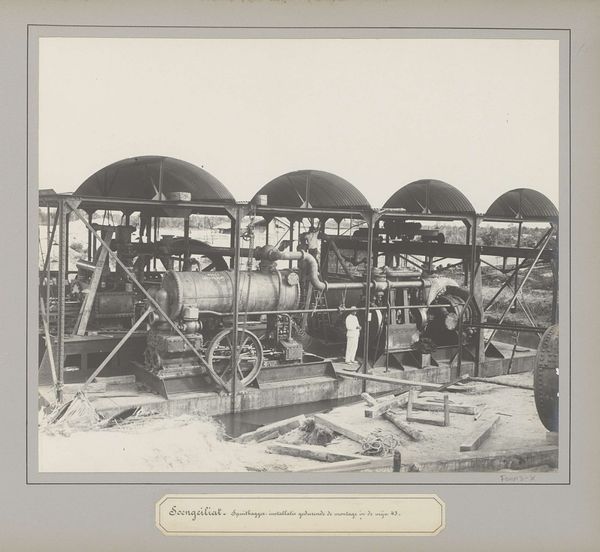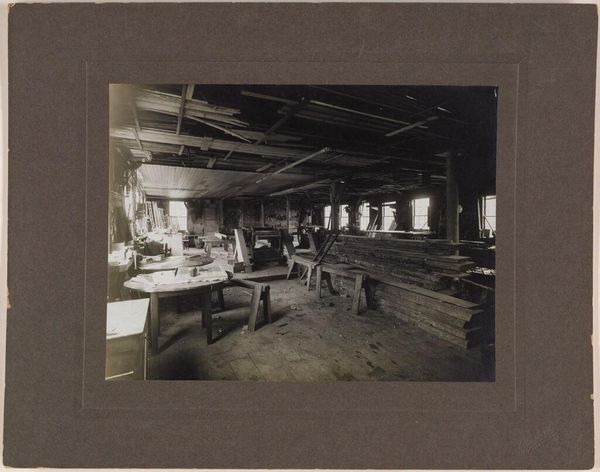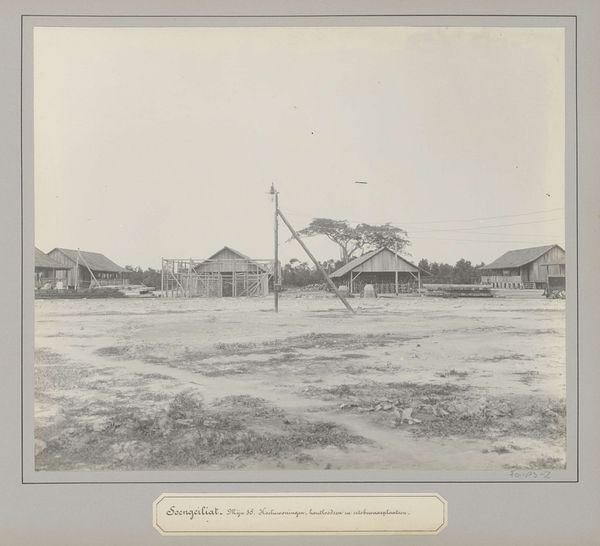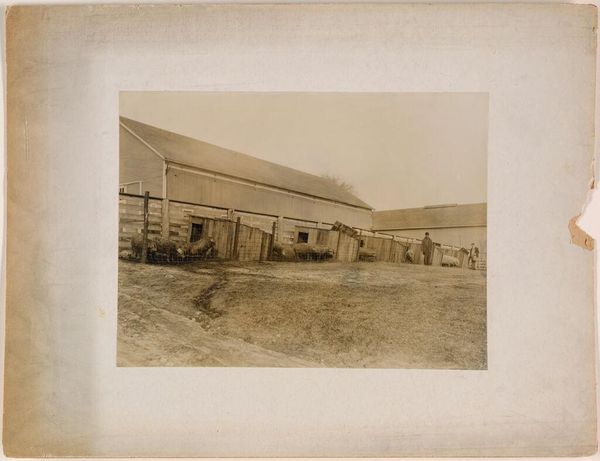
print, photography
# print
#
archive photography
#
photography
Dimensions: height 238 mm, width 285 mm
Copyright: Rijks Museum: Open Domain
Editor: Here we have a photographic print entitled "Smeltinstallatie van een tinonderneming te Belinyu," or "Smelting Plant of a Tin Company in Belinyu," dating from around 1900 to 1920. It’s part of the Rijksmuseum’s collection. I’m struck by the repeating angular shapes, like the rafters and roof tiles, which draw my eye across the scene. What do you notice about the composition of this piece? Curator: Indeed, the structural organization presents a compelling framework for analysis. Notice how the photographer utilizes the geometry of the building to create distinct spatial planes. The interplay of light and shadow defines forms and textures. Consider the tonal range—a deliberate gradation that softens the industrial subject. Editor: I hadn't thought about it that way, focusing instead on the subject matter. It's a rather muted palette, isn’t it? How does that serve the piece? Curator: Precisely. The subdued tones are integral to understanding the materiality of the print. They foreground the inherent textural qualities – the grain of the wood, the roughness of the brickwork. Note also the subtle deployment of diagonal lines which adds depth to the two-dimensional surface, mitigating the potentially static composition. Editor: So, the composition draws our attention away from what's being depicted and onto how it’s depicted. Curator: It guides and restricts our focus. What would be lost if the photograph were cropped, say, to omit a particular support beam or that carefully placed ladder? Each element, meticulously rendered in shades of gray, works to establish a visual system that communicates far more than just documentation. Editor: I see it now. I was initially focused on the image itself, but I now appreciate the photograph’s construction as a formal exercise. Curator: And I am glad we could illuminate the value of formal assessment in engaging this intriguing work.
Comments
No comments
Be the first to comment and join the conversation on the ultimate creative platform.
